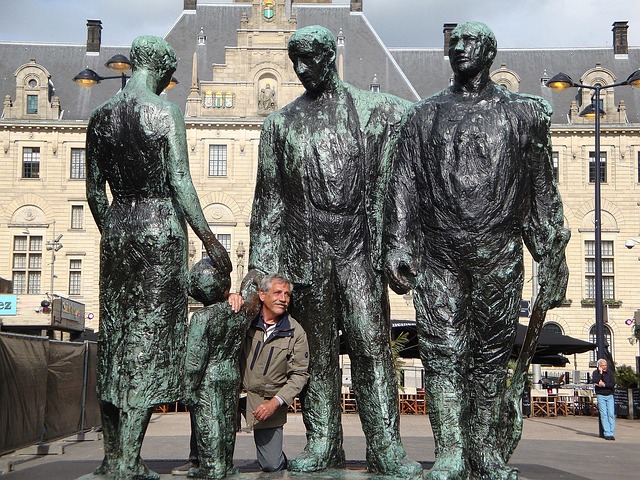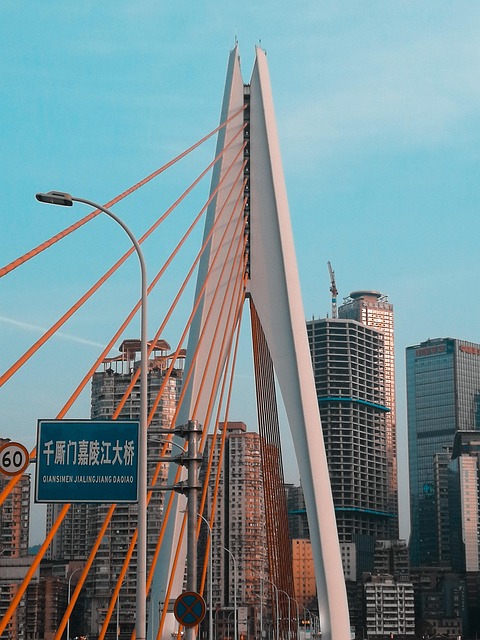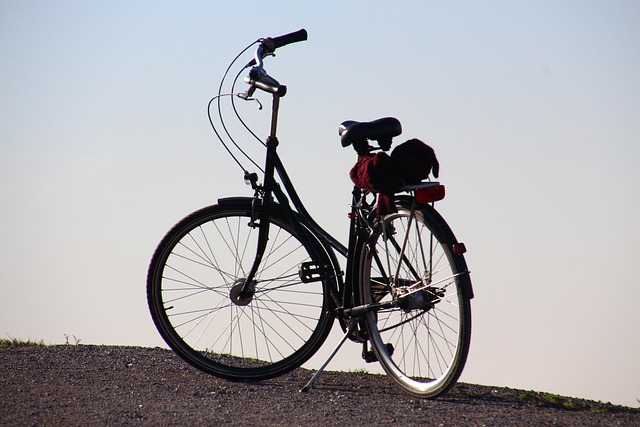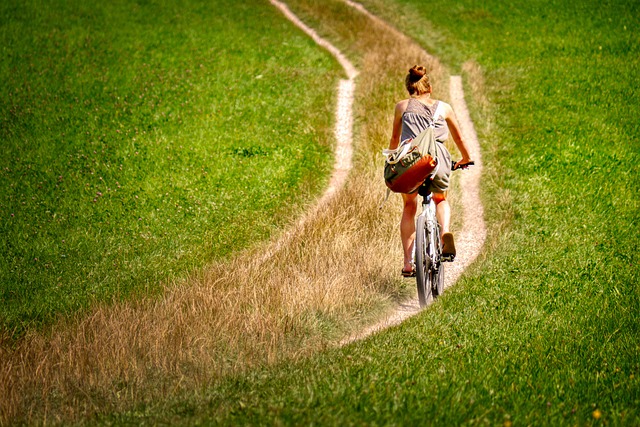Dubai, with its visionary urban development, leads global efforts in creating futuristic cityscapes. Through iconic landmarks like the Burj Khalifa and Palm Jumeirah, the city integrates sustainability, technology, and striking architecture. Dubai Guided Tours showcase these marvels, highlighting eco-friendly solutions and smart city technologies. Virtual Reality (VR) tours offer a revolutionary way to explore designs before they're built, while public spaces emphasize community engagement. As a tourist destination, Dubai's blend of architectural marvels and technological innovations attracts visitors worldwide, setting new standards for urban innovation.
“Welcome to the future of urban living! This article explores the global rise of futuristic cityscapes and innovative urban design, using Dubai as a leading case study. Discover how architectural marvels redefine skylines, and learn about smart cities pushing sustainable development. We’ll delve into virtual reality tours, community engagement strategies, and the profound impact on tourism, highlighting the success story of Dubai Guided Tours in shaping vibrant urban landscapes.”
- The Rise of Futuristic Cityscapes: A Global Trend
- Dubai as a Case Study: Innovative Urban Design
- Architectural Marvels: Iconic Structures Defining the Skyline
- Smart Cities and Sustainable Development in the Future
- Virtual Reality Tours: Exploring Urban Landscapes Digitally
- Public Spaces and Community Engagement: Creating Vibrant Cities
- The Impact of Futuristic Cityscapes on Tourism: Dubai's Success Story
The Rise of Futuristic Cityscapes: A Global Trend

The world is witnessing a global trend towards the creation of futuristic cityscapes, where innovative urban design pushes the boundaries of what cities can be. This shift is evident in various metropolises across the globe, each striving to become a pioneer in sustainable and technologically advanced living. Dubai, for instance, has long been at the forefront of this movement with its iconic skyscrapers and visionary architecture. Guided tours through these dynamic landscapes offer visitors a glimpse into the future, showcasing how urban spaces can be both visually stunning and environmentally responsible.
From vertical gardens to smart infrastructure, futuristic cityscapes are not just about aesthetic appeal but also about functionality and environmental harmony. This trend is driven by the need to accommodate growing populations while minimizing the ecological footprint. As cities evolve, so does our understanding of design, leading to creative solutions that blend art, technology, and nature in unique ways.
Dubai as a Case Study: Innovative Urban Design

Dubai, known for its extravagant architecture and ambitious projects, serves as an intriguing case study for futuristic cityscape and innovative urban design. The city has become a global icon through its bold vision, transforming into a leading tourist destination with attractions that seem straight out of science fiction. Dubai Guided Tours showcase a landscape filled with towering skyscrapers, sleek curves, and cutting-edge technology integrated seamlessly into everyday life.
The innovative urban design in Dubai is characterized by an emphasis on sustainability, interconnectedness, and avant-garde aesthetics. Iconic landmarks like the Burj Khalifa and Palm Jumeirah not only redefine skyline but also incorporate green spaces, advanced transportation systems, and smart city technologies. These developments reflect a forward-thinking approach aimed at enhancing quality of life, fostering economic growth, and ensuring Dubai remains at the forefront of urban innovation globally.
Architectural Marvels: Iconic Structures Defining the Skyline

In any discussion about futuristic cityscapes, iconic architectural structures play a pivotal role in defining the urban horizon. Cities like Dubai have emerged as global showcases for innovative urban design and engineering prowess, offering stunning landmarks that attract visitors from around the world. These architectural marvels not only serve as navigational points on the skyline but also become symbols of progress and vision.
From the towering spires of modern skyscrapers to unconventional curved facades, each structure tells a story of creativity and ambition. Dubai guided tours often highlight these iconic buildings, providing insights into the technology, design philosophy, and cultural influences that have made them such defining features of the city’s landscape. These marvels not only enhance the visual beauty of the urban environment but also contribute to a vibrant, dynamic atmosphere that characterizes futuristic cityscapes.
Smart Cities and Sustainable Development in the Future

The future of urban development is closely tied to the concept of Smart Cities, where technology and innovation intertwine with sustainable practices. This vision extends beyond merely efficient infrastructure; it envisions a harmonious coexistence between humans, nature, and advanced systems. One prominent example that showcases this fusion of ideas is Dubai, known for its ambitious projects like the Palm Islands and Burj Khalifa. Through Dubai Guided Tours, visitors can explore these marvels of modern architecture and engineering, which also incorporate eco-friendly solutions.
As cities grow, incorporating smart technologies becomes essential to meet the demands of a changing world. Sustainable development goals, such as reducing carbon footprints and optimizing resource management, are at the forefront of this transformation. Dubai’s commitment to becoming a global leader in sustainability demonstrates how futuristic cityscapes can be both awe-inspiring and environmentally responsible, setting a benchmark for urban design worldwide.
Virtual Reality Tours: Exploring Urban Landscapes Digitally

In the realm of futuristic cityscapes, Virtual Reality (VR) tours emerge as a revolutionary tool for exploring innovative urban designs. With advancements in technology, individuals can now embark on immersive journeys through cutting-edge metropolises like Dubai, offering a unique perspective on what cities might look like in the years to come. These digital experiences provide an opportunity to navigate and appreciate the intricate details of futuristic architecture and urban planning long before their physical construction.
Imagine stepping into a virtual representation of Dubai’s iconic skyline, where every towering structure tells a story of sustainability, efficiency, and artistic vision. VR tours allow visitors to wander through bustling districts, experience the hustle and bustle of digital plazas, and even envision themselves living in these futuristic habitats. This innovative approach to urban exploration not only fascinates but also bridges the gap between concept and reality, giving shape to the future of cityscapes that were once mere sketches on paper.
Public Spaces and Community Engagement: Creating Vibrant Cities

Public spaces are the lifeblood of any city, and innovative urban design in futuristic cityscapes emphasizes their importance more than ever. In Dubai, guided tours often highlight how developers have transformed concrete jungles into vibrant hubs that foster community engagement. These spaces range from sprawling parks with interactive art installations to modular plazas designed for diverse events, encouraging residents and visitors alike to gather, connect, and create.
The success of these urban transformations lies in their inclusivity and adaptability. Well-designed public areas cater to various demographics and activities, ensuring that everyone from families to artists finds a place to belong. This community engagement not only strengthens social bonds but also contributes to the city’s overall resilience and appeal, making futuristic cityscapes truly come alive.
The Impact of Futuristic Cityscapes on Tourism: Dubai's Success Story

Futuristic cityscapes have become a powerful magnet for tourists worldwide, offering a unique blend of architectural marvels and technological innovations that captivate the imagination. One prime example is Dubai, which has successfully leveraged its ambitious urban design to drive tourism. The city’s iconic skyscrapers, such as the Burj Khalifa, stand tall as symbols of human ingenuity and engineering prowess, drawing visitors from every corner of the globe. These structures, coupled with cutting-edge transportation systems like the Dubai Metro and advanced smart city technologies, create an immersive experience for tourists seeking a glimpse into the future.
Dubai’s success in attracting tourists through its futuristic cityscape is evident in the popularity of Dubai Guided Tours. These tours offer visitors the chance to explore not just the physical structures but also the underlying stories and visions that have shaped the city. From futuristic shopping malls like the Dubai Mall to sustainable initiatives like the Palm Jumeirah, each attraction tells a tale of innovation and progress. As a result, tourists not only enjoy the aesthetic appeal but also gain insights into how urban design can transform a city into a global destination, setting new standards for tourism experiences worldwide.
Futuristic cityscapes, driven by innovative urban design and technological advancements, are reshaping our global landscape. As evidenced by Dubai’s remarkable transformation, these cities offer not only breathtaking architectural marvels but also enhance sustainable development and public engagement through smart technologies. Virtual reality tours further democratize access to these urban wonders, while the success of Dubai as a tourist destination highlights the profound impact such cityscapes can have on global travel. Embracing these trends, cities worldwide are positioning themselves for a bright future, inviting visitors to explore their vibrant offerings through innovative Dubai guided tours and beyond.
